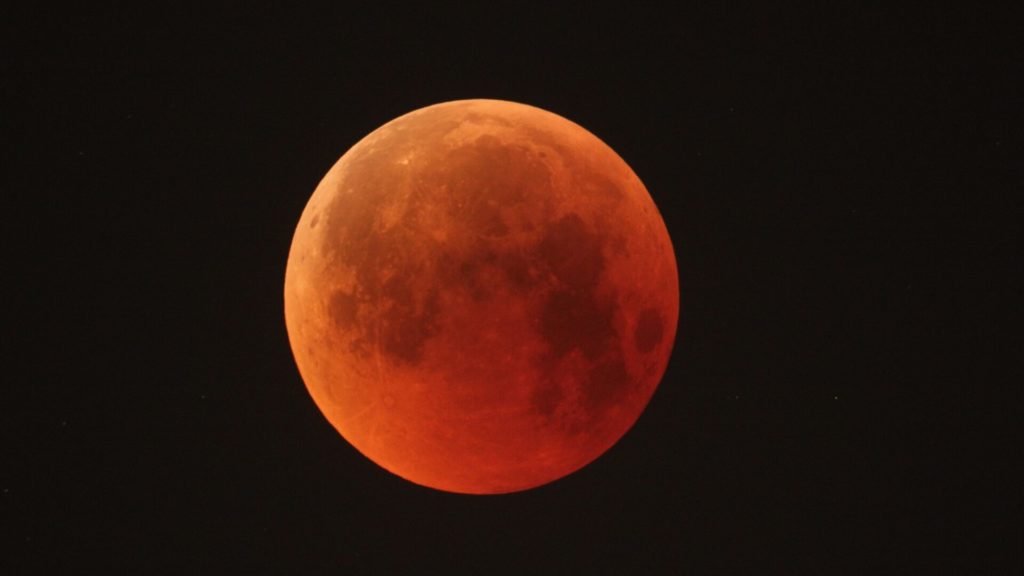
Photo: A total lunar eclipse that occurred in July of 2018 | ESO
A total lunar eclipse will occur on May 26, 2021. Read on to learn more about the conditions that create total lunar eclipses, what makes this month’s eclipse extra special, and how to view it from your own backyard!
What is a Total Lunar Eclipse?
Lunar eclipses occur only when the Moon is full, whereas solar eclipses take place only when the Moon is new. A full Moon happens when it is opposite the Sun, and Earth is in between the two bodies. Thus, when the Moon is full, it will be rising on the eastern horizon as the Sun is setting on the western horizon. The alignment of the three bodies is usually slightly imperfect, but every so often, they line up in a way that causes the Earth to block the Sun’s light from reaching the moon. When the Moon passes through Earth’s shadow, it appears darker when viewed from Earth’s surface. This darker hue can sometimes take on a reddish-orange color, which is why total lunar eclipses are sometimes referred to as “Blood Moons.” The deeper into the shadow the Moon moves, the greater the eclipse. If the entire surface of the Moon moves into the shadow, a total lunar eclipse occurs. An example of a partial eclipse would be the penumbral lunar eclipse that occurred on the 4th of July last year.
Check out this explainer video for more information!
How Can I View the Eclipse?
The May 26 eclipse will be visible from North and South America, Australia and some parts of southern and eastern Asia. In the United States, the best views will be in the western half of the country. You’ll have to be a bit of a night owl to catch the whole show—the eclipse begins at 1:47 am PDT on the 26th as the Moon slowly starts to move into the Earth’s shadow. The partial eclipse will begin at 2:44am PDT, and the full eclipse will begin about an hour and a half later at 4:11am PDT. The exact moment of total eclipse will occur at 4:25am PDT.
Unlike solar eclipses, lunar eclipses are safe to view without eye protection. You can use a telescope or binoculars to get a closer look at the Moon’s surface during the eclipse, but you will be able to see it with your unaided eye as well. This particular eclipse happens to occur during a Super Flower Moon (you may recall that we also enjoyed Super Pink Moon in 2020), and since the full Moon will be at its closest point to Earth in its orbit, it may appear slightly larger in the sky.
Don’t Miss Our Eclipse Live Stream!
Lowell Observatory is proud to present the 2021 Lunar Eclipse Live Stream! Starting at 2:30am on May 26th, Lowell educators will show you live views of the eclipse through our 14” Planewave telescope and wide-view portable Vixen telescopes. Maximum eclipse occurs at 4:30am PDT. Educators will also discuss the science of eclipses, the best ways to view them, Lowell’s history with the Moon, and much more!
You can find all of our Live-Streams and more on our YouTube channel!
[vcex_button url=”https://www.youtube.com/channel/UC4zmFY211sXfEamwmsJcrYA” title=”Visit Site” style=”flat” align=”center” color=”red” size=”small” target=”self” rel=”none”]Subscribe Today[/vcex_button]